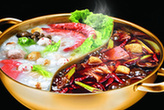|
|
The robes worn by emperors and imperial concubines in the play are called mangpao. These are costumes suitable for the high rank of the character, featuring brilliant colors and rich embroidery, often with the design of dragon scales. On formal occasions, officials may wear the guanyi, a simple gown with patches of embroidery on both the front and back. All other characters, and officials on informal occasions, wear the zhezi, a basic gown with varying levels of embroidery and no jade girdle to denote rank. Tertiary characters of no rank wear simple clothing without embroidery. Costumes worn by generals and soldiers are called kaijia and kaozi.
|
|
Hats are intended to blend in with the rest of the costume and will usually have a matching level of embroidery. Shoes may be high or low soled, the former being worn by characters of high rank, and the latter by characters of low rank or acrobatic characters.
There is also an unwritten rule on the usage of color. Emperors and their families wear yellow robes; green is often worn by hongsheng, a red-faced older male character; white is for wusheng, a martial male character; old male characters often wear black and blue.
The painted faces also allow Chinese audiences to instantly be able to tell the personality of the characters on stage. The audiences have long accepted the traditional way of the facial pattern expression. Generally, the red face makeup refers to loyal and upright persons, the black face makeup refers to faithful and straightforward persons, the white face makeup refers to an imperious and treacherous person, the multi-colored face makeup refers to ghosts and gods and the white-colored face makeup between the eyes and nose refers to a clown’s face, which appears funny and humorous.
|
|





Why not rent a boyfriend, or girlfriend to please parents during the Spring Festival?